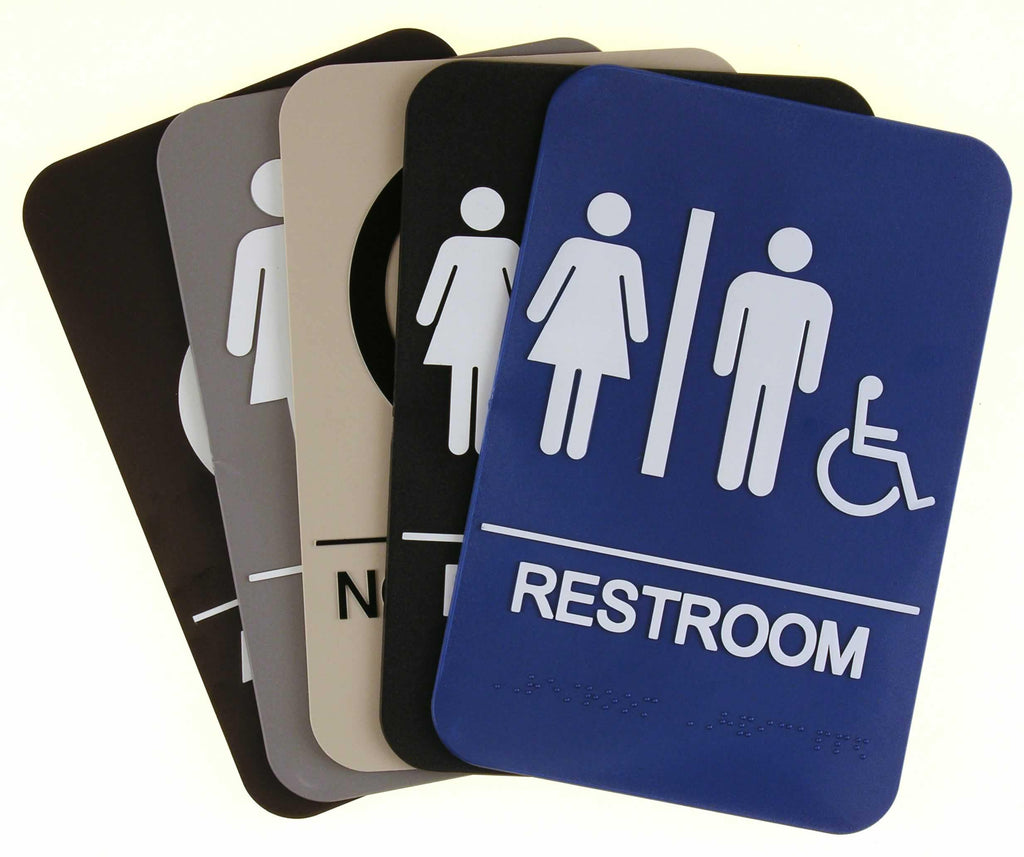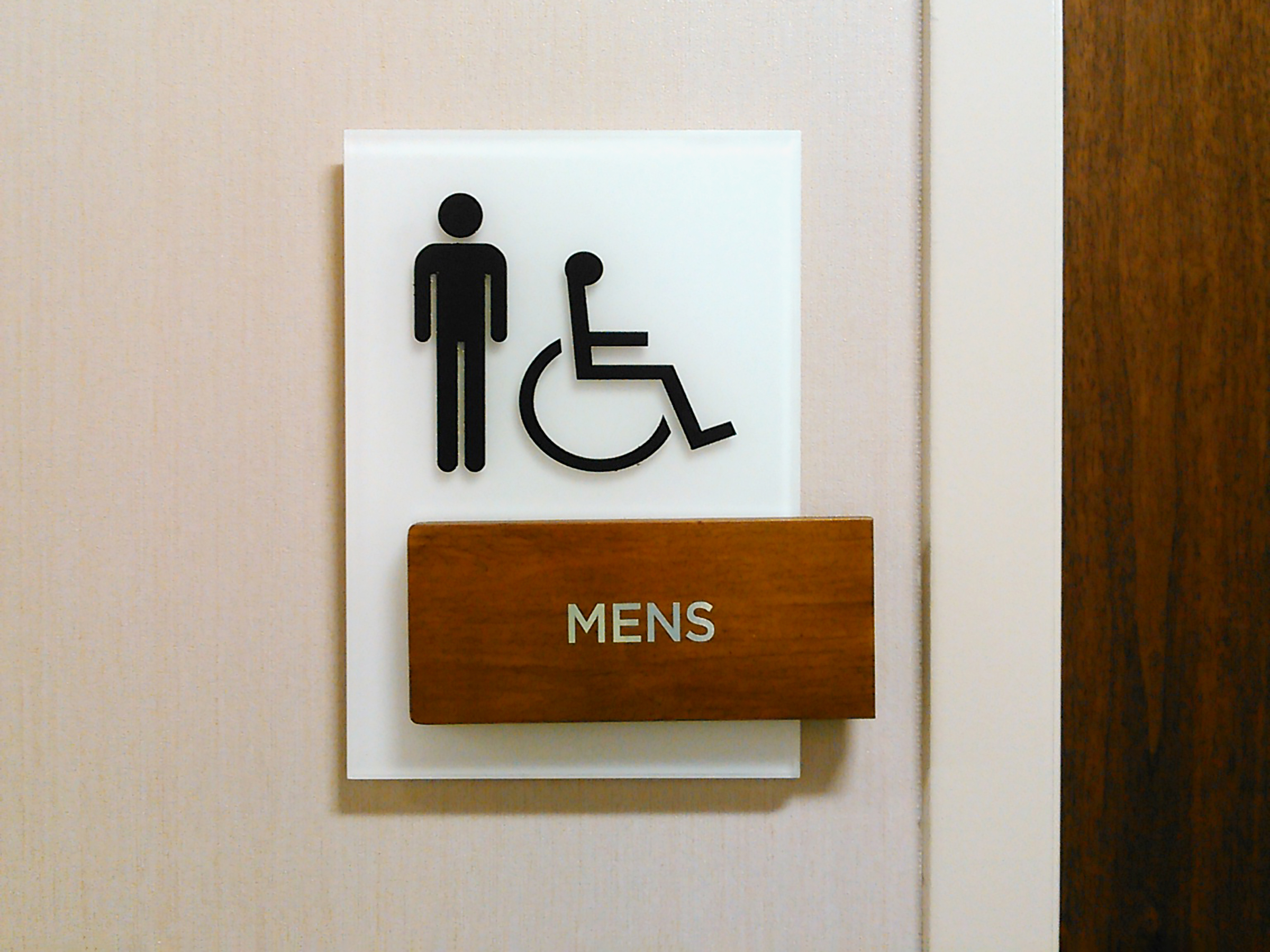Exploring the Secret Attributes of ADA Indicators for Boosted Accessibility
In the realm of availability, ADA indicators function as silent yet powerful allies, ensuring that spaces are navigable and inclusive for individuals with disabilities. By incorporating Braille and tactile components, these indicators break obstacles for the visually damaged, while high-contrast color design and clear typefaces deal with diverse aesthetic demands. Moreover, their strategic positioning is not arbitrary but rather a calculated initiative to help with smooth navigating. Yet, past these functions exists a much deeper narrative regarding the development of inclusivity and the recurring commitment to creating fair spaces. What a lot more could these signs symbolize in our pursuit of global availability?
Importance of ADA Conformity
Ensuring conformity with the Americans with Disabilities Act (ADA) is important for cultivating inclusivity and equal accessibility in public areas and offices. The ADA, enacted in 1990, mandates that all public facilities, employers, and transportation solutions suit people with disabilities, ensuring they enjoy the exact same civil liberties and opportunities as others. Compliance with ADA standards not just meets legal responsibilities however additionally improves a company's online reputation by demonstrating its commitment to diversity and inclusivity.
One of the crucial elements of ADA compliance is the application of obtainable signs. ADA indications are made to make certain that people with handicaps can conveniently browse via buildings and spaces.
Furthermore, adhering to ADA laws can alleviate the threat of lawful consequences and prospective penalties. Organizations that fall short to follow ADA standards may deal with charges or legal actions, which can be both financially difficult and damaging to their public photo. Therefore, ADA conformity is indispensable to promoting a fair atmosphere for everybody.
Braille and Tactile Elements
The unification of Braille and tactile aspects right into ADA signs embodies the concepts of ease of access and inclusivity. These attributes are vital for people who are blind or visually damaged, allowing them to browse public spaces with greater self-reliance and confidence. Braille, a responsive writing system, is crucial in offering created details in a format that can be easily regarded through touch. It is normally positioned below the equivalent text on signs to ensure that individuals can access the info without visual support.
Tactile elements extend past Braille and consist of increased characters and signs. These components are made to be discernible by touch, allowing people to identify room numbers, restrooms, exits, and various other critical areas. The ADA sets specific standards relating to the size, spacing, and positioning of these responsive elements to optimize readability and ensure uniformity across various atmospheres.

High-Contrast Shade Systems
High-contrast color pattern play a critical duty in enhancing the presence and readability of ADA signs for individuals with aesthetic disabilities. These systems are necessary as they maximize the distinction in light reflectance between message and background, making sure that signs are conveniently discernible, also from look at here now a distance. The Americans with Disabilities Act (ADA) mandates the usage of certain color contrasts to suit those with restricted vision, making it a crucial element of conformity.
The effectiveness of high-contrast shades hinges on their capacity to stand apart in numerous lighting conditions, including poorly lit environments and areas with glow. Commonly, dark text on a light background or light text on a dark history is employed to accomplish optimal comparison. For example, black text on a white or yellow history provides a plain aesthetic difference that aids in fast acknowledgment and understanding.

Legible Fonts and Text Dimension
When taking into consideration the design of ADA signage, the choice of clear typefaces and proper text size can not be overstated. These elements are essential for making certain that signs are available to individuals with visual impairments. The Americans with Disabilities Act (ADA) mandates that typefaces should be sans-serif and not italic, oblique, script, highly decorative, or of unusual form. These needs aid make certain that the message is conveniently understandable from a range which the characters are appreciable to diverse audiences.
According to ADA guidelines, the minimal text elevation ought to be 5/8 inch, and it should raise proportionally with checking out distance. Uniformity in text dimension contributes to a cohesive visual experience, assisting individuals in browsing atmospheres successfully.
Additionally, spacing between lines and letters is integral to clarity. Adequate spacing protects against personalities from appearing crowded, boosting readability. By adhering to these requirements, developers can dramatically boost availability, ensuring that signs offers its intended function for all individuals, despite their visual abilities.
Reliable Placement Methods
Strategic placement of ADA signs is necessary for taking full advantage of access and making certain conformity with lawful requirements. ADA guidelines state that indicators must be mounted at a height in between 48 discover this info here to 60 inches from the ground to ensure they are within the line of sight for both standing and seated people.
Additionally, indicators should be placed nearby to the lock side of doors to permit easy recognition before access. This positioning helps people find areas and areas without obstruction. In instances where there is no door, indicators ought to be situated on the local surrounding wall. Consistency in indicator placement throughout a center improves predictability, lowering confusion and improving total individual experience. helpful site

Conclusion
ADA indicators play a vital role in advertising accessibility by integrating functions that attend to the demands of people with specials needs. These aspects collectively foster a comprehensive setting, highlighting the value of ADA compliance in guaranteeing equal accessibility for all.
In the world of availability, ADA signs offer as quiet yet powerful allies, ensuring that spaces are inclusive and accessible for people with handicaps. The ADA, established in 1990, mandates that all public centers, employers, and transport solutions suit individuals with handicaps, ensuring they appreciate the exact same civil liberties and chances as others. ADA Signs. ADA indicators are created to guarantee that people with handicaps can easily navigate via rooms and buildings. ADA standards specify that signs should be installed at an elevation in between 48 to 60 inches from the ground to ensure they are within the line of view for both standing and seated people.ADA signs play an essential duty in advertising access by incorporating features that resolve the requirements of people with disabilities
Comments on “Customizing ADA Signs to Meet Your Specific Demands”